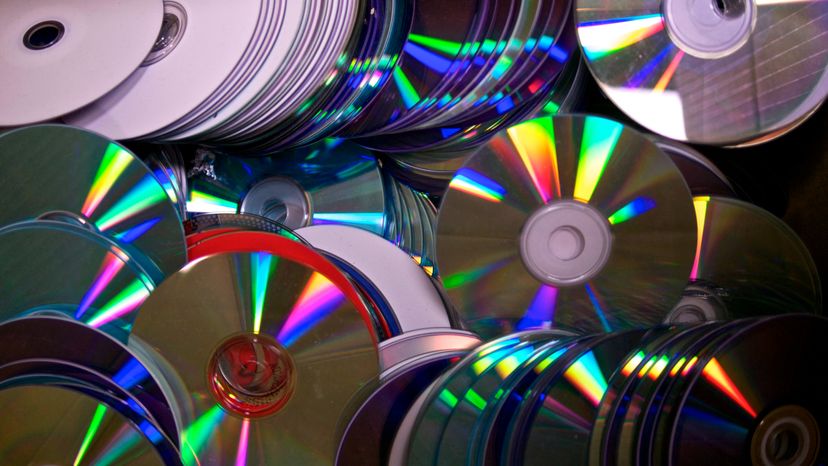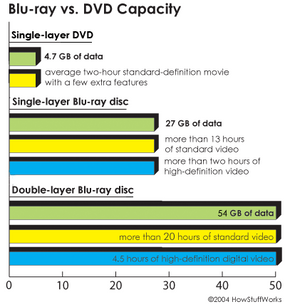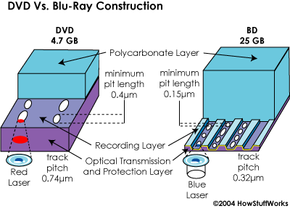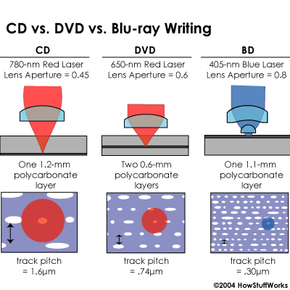
In 1997, a new technology emerged that brought digital sound and video into homes all over the world. It was called DVD, and it revolutionized the movie industry.
The industry is set for yet another revolution with the introduction of Blu-ray Discs (BD) in 2006. With their high storage capacity, Blu-ray discs can hold and play back large quantities of high-definition video and audio, as well as photos, data and other digital content.
Advertisement
In this article, HowStuffWorks explains how the Blu-ray disc works and how it was developed, and we'll see how it stacks up against some other new digital video formats on the horizon.
A current, single-sided, standard DVD can hold 4.7 GB (gigabytes) of information. That's about the size of an average two-hour, standard-definition movie with a few extra features. But a high-definition movie, which has a much clearer image (see How Digital Television Works), takes up about five times more bandwidth and therefore requires a disc with about five times more storage. As TV sets and movie studios make the move to high definition, consumers are going to need playback systems with a lot more storage capacity.

Blu-ray is the next-generation digital video disc. It can record, store and play back high-definition video and digital audio, as well as computer data. The advantage to Blu-ray is the sheer amount of information it can hold:
- A single-layer Blu-ray disc, which is roughly the same size as a DVD, can hold up to 27 GB of data -- that's more than two hours of high-definition video or about 13 hours of standard video.
- A double-layer Blu-ray disc can store up to 50 GB, enough to hold about 4.5 hours of high-definition video or more than 20 hours of standard video. And there are even plans in the works to develop a disc with twice that amount of storage.
Source: White Paper: Blu-ray Disc Format
We'll learn more about the differences between Blu-ray discs and DVDs in the next section.
Advertisement



